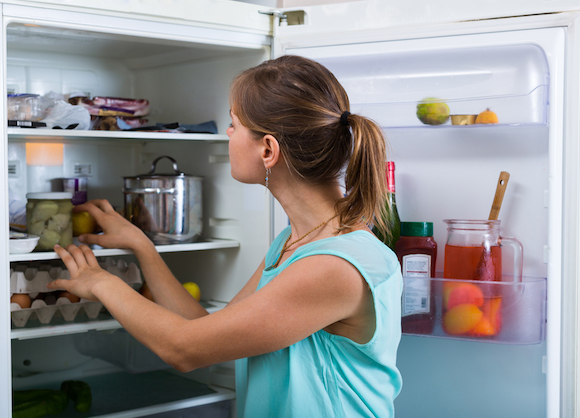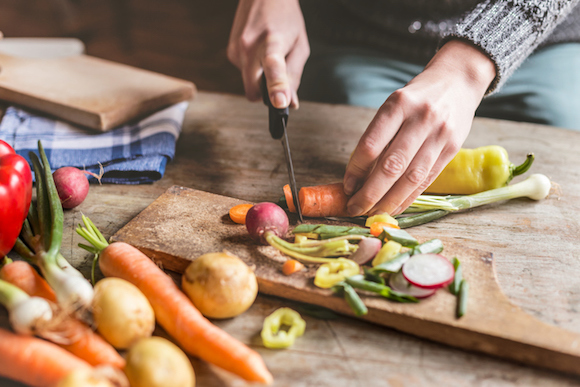Meal prep doesn’t just help you save time and money — it can also lead to smarter, healthier eating habits.
“If you have healthy foods at the ready, you’re more likely to opt for these over takeout or snacking through a meal,” says Amy Gorin, MS, RDN, and owner of Amy Gorin Nutrition in Jersey City, NJ.
Here’s how to organize your kitchen to make meal prep a cinch:
1. Clean Out Your Fridge Before You Grocery Shop
Toss expired foods, stale snacks, ingredients you haven’t touched in months (and probably never will), and any unhealthy foods you want to avoid. Simplifying your pantry and fridge makes it easier to find and incorporate all your ingredients when cooking.
2. Group Ingredients Together By Recipe
Jennifer Lava, Professional Organizer and Productivity Consultant, says the key to maintaining an organized fridge and pantry is to keep like items together.
And if you use certain items in the same meal — like dried noodles and pasta sauce — keep them next to one another for easy access.
3. Set Up Cooking Stations
If you make a protein shake or smoothie every day, keep your blender on the counter and put all your other necessities — cups, protein powder, nut butters, seeds, and the like — in a nearby basket or cupboard. Do the same for your daily coffee routine or baking habit.
“The idea is to keep things in easy view so you can see if you need to buy more ingredients, and so you can gather the items you need to work with as quickly as possible,” says Lava.
4. Keep a Cutting Board on the Counter
“I like to leave my cutting board out on the counter so it’s super easy to grab a knife and start cutting veggies,” says Gorin.
5. Use Clear Containers You Can See inside
Glass containers are ideal since you can safely use them in an oven or microwave to reheat your food. If you’re on the go, though, Gorin recommends OXO LockTop containers, which have leak-proof lids and separate compartments for dressings and sauces.
“Mason jars also work really well, especially for salads or for storing extra cooked grains or smoothies in the freezer,” says Gorin.
Another tip? Keep open containers on the counter as you slice veggies, grill chicken, or chop fruit so you can pre-portion your meals as you go.
6. Date Your Freezer Food
Label your freezer containers with the type of dish and date it was made. “Put newer or fresher items behind the older ones so you make sure you are eating them in a timely manner,” says Lava.
7. Keep Older Food in Front
Put food that’s about to expire front and center in the fridge, so you know what to eat first. Use a Lazy Susan or plastic fridge container to hold leftovers and ingredients that are about to go bad.
8. Keep Containers and Baggies Accessible
Instead of digging through piles of mismatched containers and lids, organize them in one easy-to-reach cabinet or drawer. Keep the lids in a separate basket so you don’t lose them.
9. Pre-portion Healthy Snacks
Gorin recommends keeping healthy, portion-controlled snacks — like small Ziplocs full of nuts or dried fruit — in a bin so you can grab them on the go.
10. Keep an Inventory List
Jot down a list of ingredients and dishes you’ve prepped, then keep it on your fridge or kitchen counter as a quick reference.





